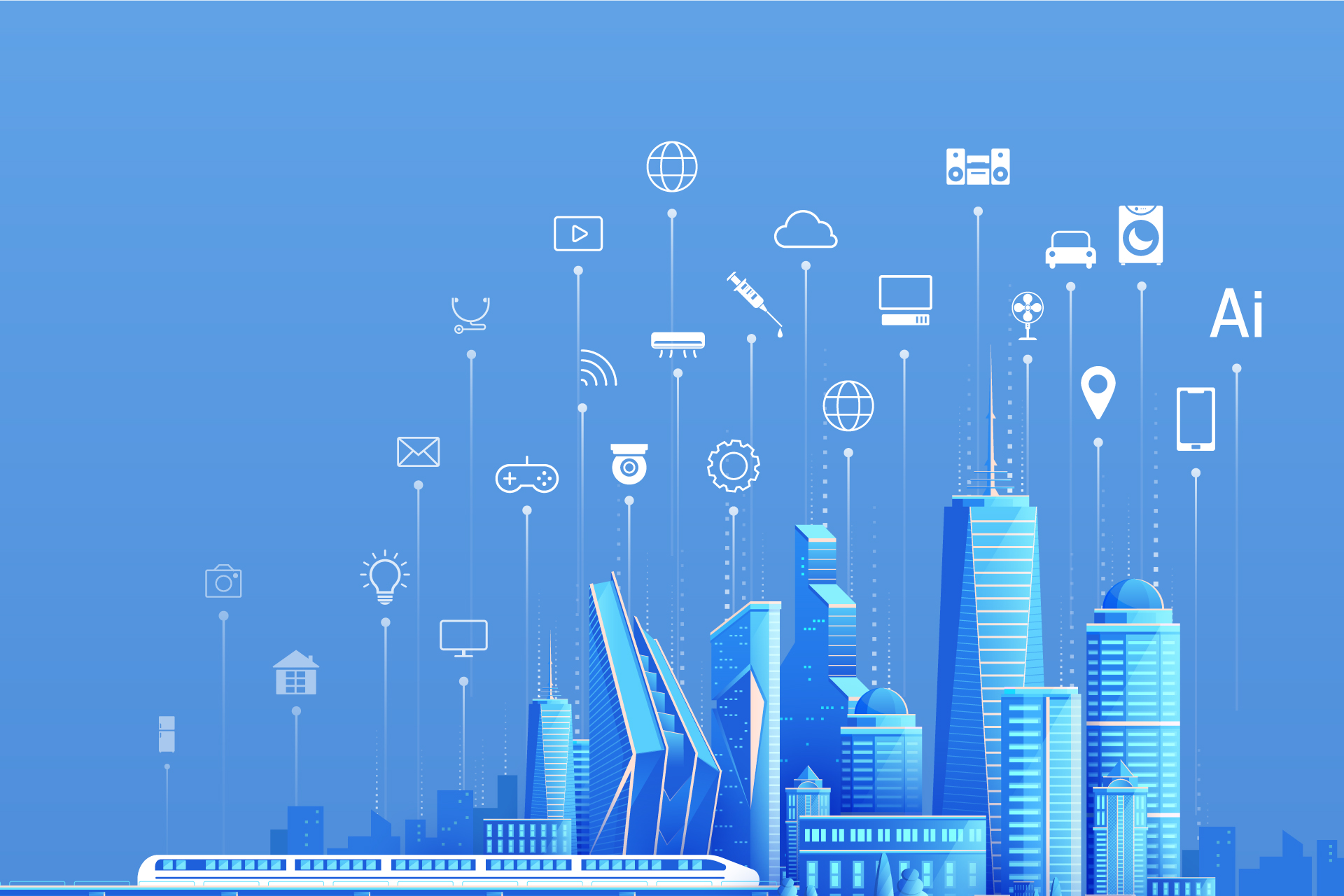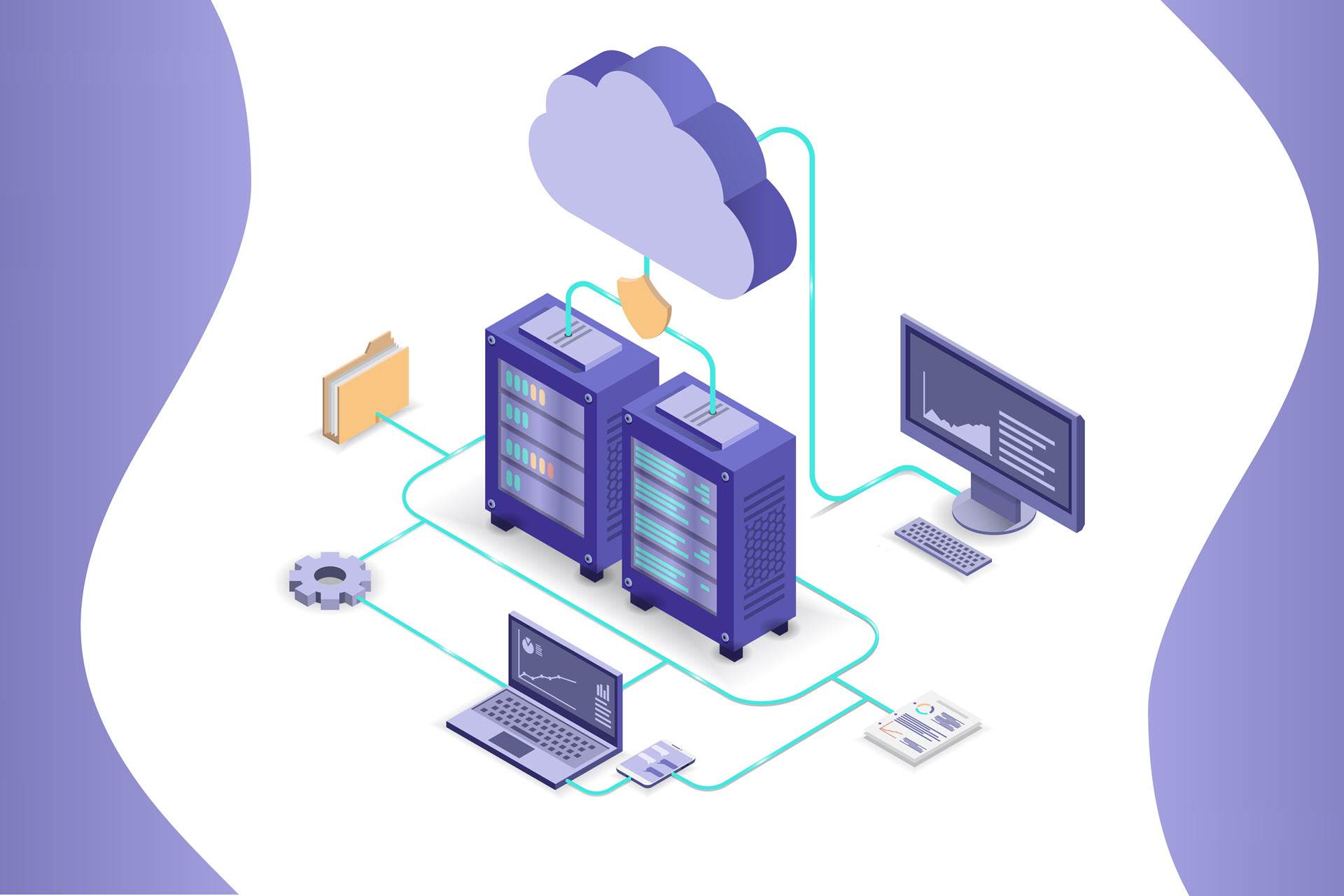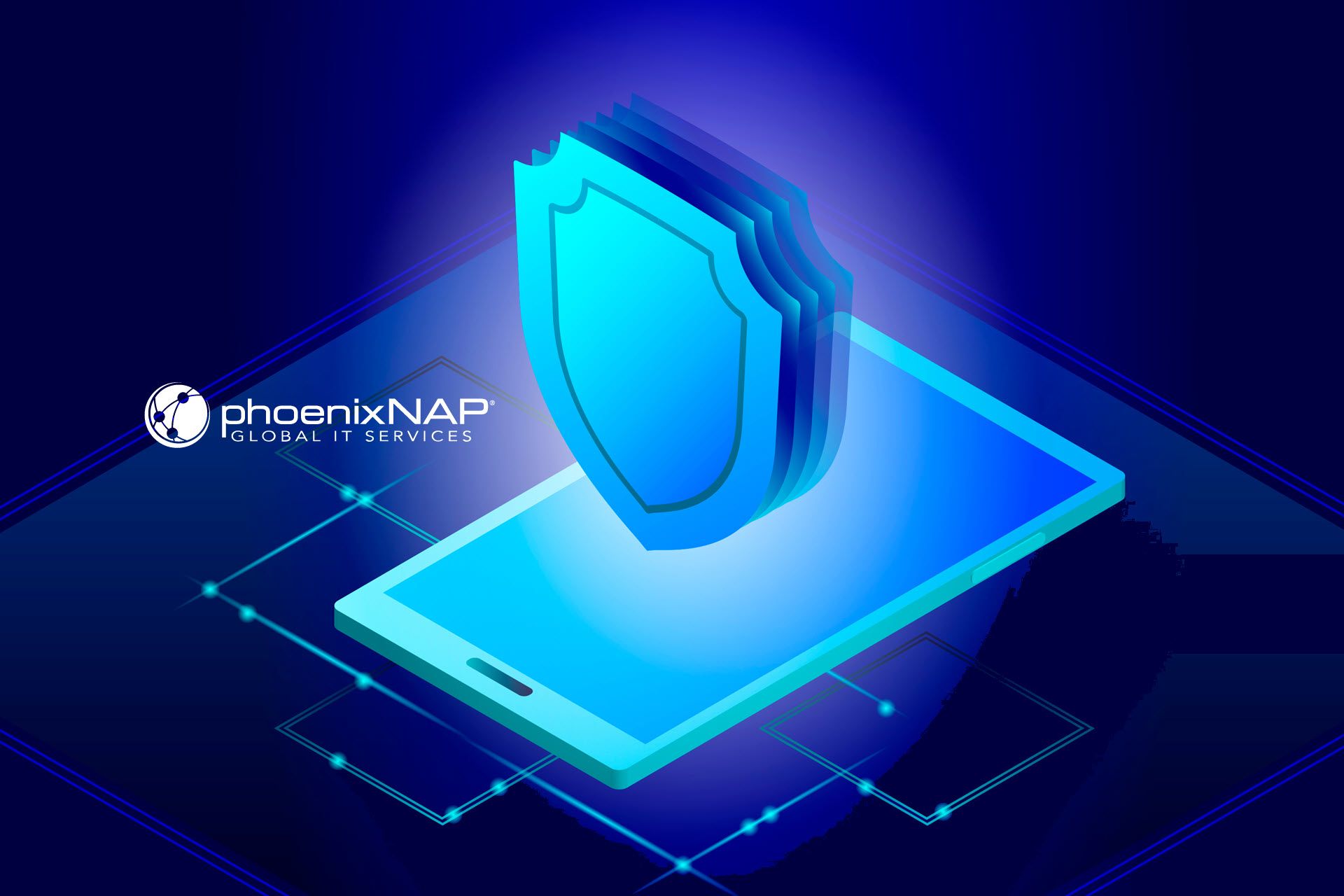Since the invention of computer processors, they have shrunk in size while exponentially increasing in power. This technological leap enables us to embed advanced computing capabilities in everyday objects to improve them fundamentally.
From intelligent traffic lights to smart factory machinery, edge computing devices are a testament to the possibilities of modern technology. Unlike the traditional approach of ferrying data to centralized data centers for computation, edge devices leverage the advantages of computing data closer to the point of generation.
This article explains what edge computing devices are, how they work, and how they change the world around us.
What Is an Edge Device?
An edge device is hardware that sits at the periphery of a computer network and links it to other networks and the physical world. Some edge devices are entirely autonomous and self-contained in doing tasks as they process and act on data locally.
Edge devices fall into two main categories. Traditional devices, with basic sensing and communication capabilities, and intelligent devices equipped for machine learning, advanced processing, and decision-making.
Traditional Edge Devices
A traditional edge device manages data flow between two networks with minimal processing.
Here are some examples of traditional edge devices:
- Routers. Routers allow multiple devices to share a single internet connection. They connect networks, manage multi-network traffic, and handle data flow to specific IP addresses.
- Switches. A switch is a multi-port device that connects devices like computers, printers, and servers within a local area network (LAN) or a wide area network (WAN). Its primary function is to forward data packets between these devices based on their destinations.
- Firewalls. Firewalls monitor a network's incoming and outgoing traffic to detect and block malware. For example, packet-filtering firewalls examine the header information of each packet of data that passes through them. If the information matches a set of predefined rules, the packet is allowed to pass through.
Intelligent Edge Devices
Intelligent edge devices are autonomous and complex computers that collect, process, and transmit data.
Here are some examples of intelligent edge devices:
- Smart sensors. Intelligent sensors autonomously detect and correct abnormal physical conditions near the machine. Examples include temperature sensors that prevent overheating and equipment failure or air quality sensors that ensure worker safety and environmental compliance.
- Smart actuators. Actuators translate a computer signal into physical actions. For example, a smart valve automatically adjusts coolant flow based on temperature sensor data to prevent overheating.
- IoT gateways. IoT gateways act as intermediaries between IoT devices and the network. They collect data from various IoT devices, convert it to a standard format, perform initial data processing, and implement security measures like encryption and device authentication to protect the network.
- Smart Cameras. These cameras analyze video footage locally, identifying objects, detecting anomalies, and sending alerts.
Edge vs. Non-edge Device
Whether a device is edge or non-edge depends on its specific role and context within a system.
If you need clarification on what makes a device edge vs. non-edge, here is a table breaking down the key differences.
| Edge Devices | Non-edge Devices | |
| Location | "Edge" of network: sensors, wearables, smart devices. | "Core" of network: cloud servers, mainframes. |
| Function | Collect and pre-process data from the physical world. | Receive, process, and analyze data from edge devices. |
| Processing Power | Limited, focused on specific tasks. | High, complex computations and analytics. |
| Data Flow | Send data to a data center. | Receive data from and send instructions to edge devices. |
| Focus | Real-time interaction, local decision-making. | Central data processing, strategic decision-making. |
Edge and cloud computing are not mutually exclusive but complementary. An edge device handles time-sensitive tasks while sending filtered data to the cloud for analysis. To learn more, read our detailed comparison of edge and cloud computing.
Edge Devices vs. IoT devices
Although similar, the Internet of Things (IoT) and edge devices are not the same.
IoT refers to the interconnected network of devices capable of generating and transmitting data over the Internet. An IoT device is a physical object, like a smart refrigerator, that acts as a data source. After it generates the data, the IoT device transmits it to a processing unit, such as an edge device or a central server in the cloud.
A key distinction is that edge devices are powerful enough to make decisions and process data. However, some IoT devices blur the line with ample computational resources.
Edge computing unlocks real-time analysis of massive IoT data streams, propelling innovative use cases. Read our article on IoT edge computing to understand the collaborative use of edge and IoT devices.
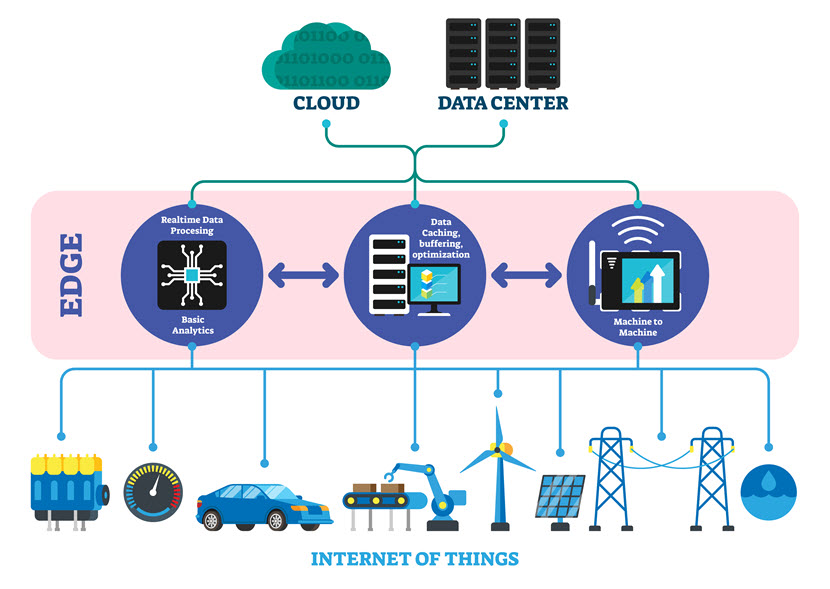
Benefits of Edge Computing Devices
There are several advantages to using edge devices compared to non-edge devices.
- Reduced network latency. Processing data locally removes the need to transmit data to and from the cloud. This reduction in latency is critical for applications that require real-time responsiveness.
- Increased reliability. Decentralized systems are less vulnerable to single points of failure because they distribute processing and decision-making. For example, edge devices will still function if the internet connection goes down or a cloud provider has an outage. This resilience makes edge devices an excellent business continuity and disaster recovery tool.
- Improved bandwidth efficiency. Edge devices can pre-process and filter data before sending it to the cloud, reducing the bandwidth required to transport data and saving on storage costs.
- Enhanced security. Decentralizing information processing across edge devices reduces the amount of data traveling to centralized systems, reducing the attack surface and the likelihood of attackers simultaneously breaching large amounts of data. Furthermore, edge devices can store and process sensitive data locally without ever sharing it. A closed ecosystem reduces the risk of unauthorized access or data leaks.
At phoenixNAP, we take data security seriously. Our data centers have multiple layers of physical security, and our Data Security Cloud offers supreme protection against a wide range of cyberattacks.

Edge Device Use Cases
Edge computing powers practical and profitable innovations across various industries.
Here are some edge device use cases.
Autonomous Drones
Thanks to edge computing, unmanned aircraft aren't just pre-programmed robots but intelligent machines capable of adapting to their surroundings. Onboard processing units crunch data from sensors, allowing drones to dodge obstacles in real time, adjust flight paths based on weather, and make decisions without relying on an internet connection.
The practical value of these drones is immense, ranging from disaster relief to precision agriculture, package delivery, and aerial cinematography.
Smart Traffic Lights
Equipped with sophisticated sensors, smart traffic lights gather real-time data on vehicle and pedestrian activity. This information allows them to dynamically adjust signal timings, optimize traffic flow, and minimize congestion.
As a result, commuters experience shorter travel times, and emissions from idling vehicles decrease, leading to improved air quality.
Edge Servers
Data center operators strategically deploy edge servers as mini data centers closer to users and devices. This approach tackles two major challenges: latency and bandwidth. Edge servers process and store data closer to where it's generated, reducing the need to send everything back to a central data center, which can be hundreds of miles away.
Thanks to edge servers, users get noticeably faster responses and smoother performance, while data center operators benefit from less network congestion and lower infrastructure costs.
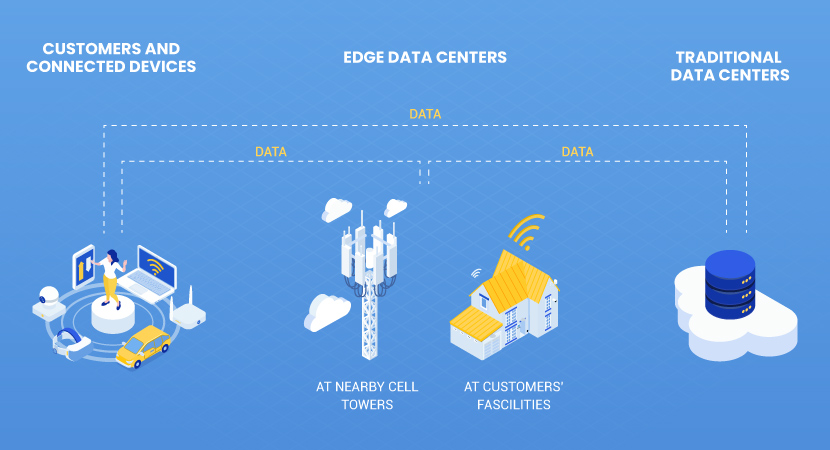
Our edge servers in Austin, Texas, enable 10-millisecond access throughout the U.S. Southwest with our Bare Metal Cloud service. Housed in an American Tower data center, this edge location boosts connectivity via virtual cross-connects and Megaport Cloud Router.
Advanced Video Processing
Edge devices with advanced algorithms excel in seamlessly tracking specific objects across camera feeds. This capability is crucial in real-time monitoring of crowd movements. Additionally, access control systems leverage edge computing to execute quick facial recognition, bypassing the potential sluggishness of cloud-based processing.
Self-Driving Vehicles and Driver Assists
Edge computing devices enable widely used vehicle driving assistance features like blind spot detection, lane departure warnings, and emergency braking.
The evolution of these features has led to working prototypes of autonomous self-driving vehicles. These vehicles fuse LiDAR sensor data with camera images to identify stationary and moving obstacles and pedestrians stepping onto the road. The responsiveness and processing power of the onboard computers allow the vehicle to understand the surrounding environment and react instantly to prevent a collision.
Smart Factories
Traditional sensors can only collect data. But when you combine sensor data with the processing power of an edge device, you get smart sensors that can detect increased vibration and heat in a machine component and pinpoint the fault based on real-time, local analysis.
Detecting subtle anomalies in vibration patterns, temperature changes, or power consumption allows for early diagnostics and maintenance before a failure happens.
Wearable Devices
Wearable devices play a crucial role in healthcare, monitoring various fitness metrics and providing users with valuable health insights.
These devices integrate advanced sensors for proactive health monitoring, enabling early detection of arrhythmias and diabetes. For older people or those prone to falls, wearables with accelerometers and gyroscopes are a safety net, detecting sudden movements and alerting caregivers.
Beyond data tracking, wearables use advanced algorithms to provide personalized exercise, nutrition, and stress management recommendations. However, if the data processing occurs in the cloud, these devices fall under the category of IoT rather than edge devices.

Edge Devices Empower Smarter Machines
Edge devices are the workhorses of edge computing. They transformed the technology by bringing its power closer to the physical world. By performing complex computations locally, they enable immediate insights and actions. Their ability to reduce latency and improve bandwidth efficiency opens doors for innovative applications across various domains.
